English Heritage sites near Rowlands Castle Parish
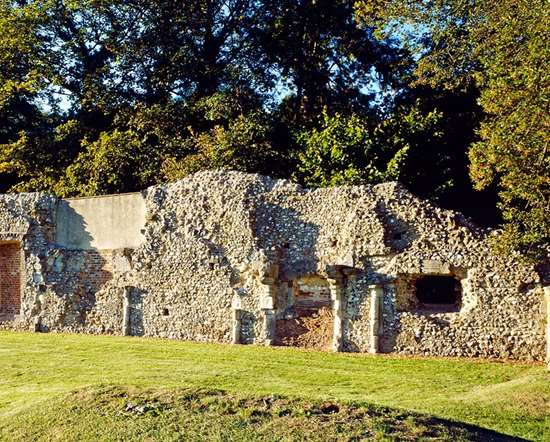
SOUTHWICK PRIORY
7 miles from Rowlands Castle Parish
Remains of a wealthy Augustinian priory, originally founded at Portchester: once a famous place of pilgrimage. Only part of the refectory wall survives.
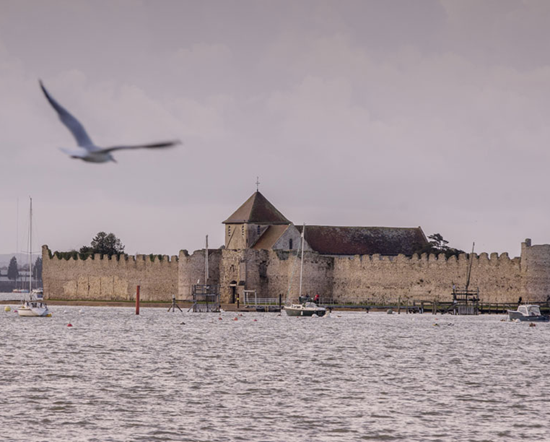
PORTCHESTER CASTLE
8 miles from Rowlands Castle Parish
Looking for a fun family day out? Visit Portchester Castle in Hampshire, South East England. It provides the perfect setting for a relaxed, fun, historic day out!
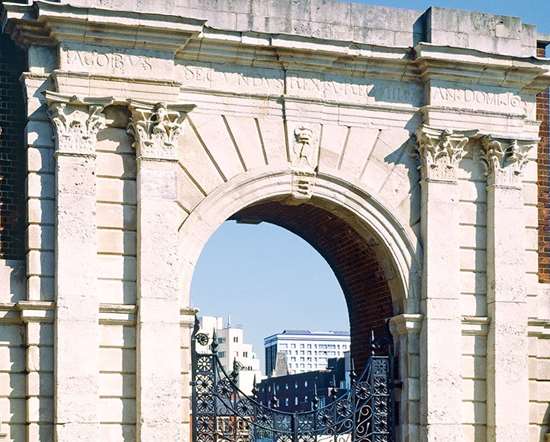
KING JAMES'S AND LANDPORT GATES, PORTSMOUTH
10 miles from Rowlands Castle Parish
Two ornamental gateways, once part of Portsmouth's defences. King James's Gate (of 1687) has been moved, but Landport Gate (1760), remains in it's original position.
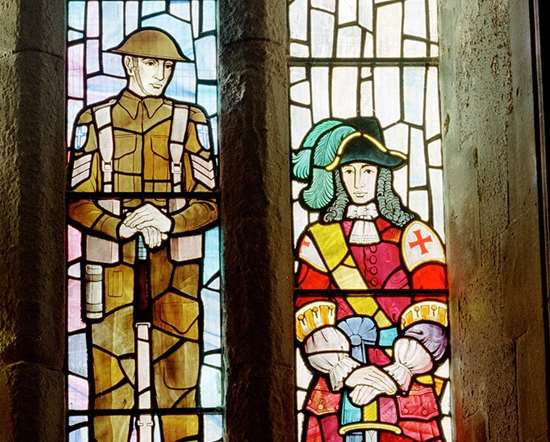
ROYAL GARRISON CHURCH, PORTSMOUTH
10 miles from Rowlands Castle Parish
Royal Garrison Church was built in about 1212 as part of a hospital complex. Although the nave was badly damaged in a 1941 firebomb raid on Portsmouth, the chancel remains roofed and furnished.
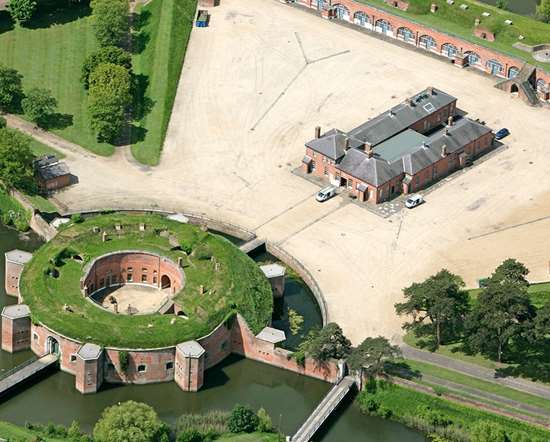
FORT BROCKHURST
11 miles from Rowlands Castle Parish
One of a number of forts built in the 1850s and 1860s to protect Portsmouth and its harbour against a French invasion. Largely unaltered, the parade ground, gun ramps and moated keep can be viewed.
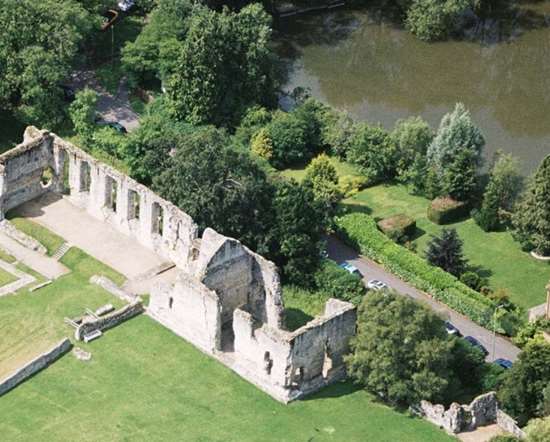
BISHOP'S WALTHAM PALACE
11 miles from Rowlands Castle Parish
The ruins of a medieval palace (together with later additions) used by the Bishops and senior clergy of Winchester as they travelled through their diocese.
Churches in Rowlands Castle Parish
St Hubert

Old Idsworth
Finchdean
Waterlooville
07429187233
http://www.bcichurches.org.uk
The church which dates from 10th Century, or even earlier, sits in the middle of field near the village of Finchdean and is a peaceful place to visit and worship.
St Hubert's Idsworth is one of three churches in the United Benefice. The others are Holy Trinity, Blendworth (near Horndean) and St. Michael's, Chalton (near Clanfield off the A3M) which have their own pages on this website.
We are church that offers a warm welcome to people of all backgrounds, at all stages of their faith journey. Some of us have been Christians for many years, others would not call themselves Christians. We offer space to worship, to explore the Christian faith and to ask questions. Many visit to find spiritual peace in this ancient building. Services are relaxed and friendly, and children of all ages are welcome.
St Hubert's has a regular congregation of about 25 who meet at 9.30 am on Sundays. The usual pattern of worship is as follows:
1st Sunday of the month 9.30 am Mattins (Book of Common Prayer)
2nd Sunday of the month 9.30 am Parish Communion
3rd Sunday of the month 9.30 am Mattins (Book of Common Prayer)
4th Sunday of the month 9.30 am Morning Prayer (Common Worship)
5th Sunday of the month 9.30 am Parish Communion
Fridays weekly 9.00 am Morning Prayer
Please see the Benefice website www.bcichurches.org.uk for seasonal and other occasional variations.
FOR THE SAFETY OF ALL, PLEASE COMPLY WITH ANTI-CORONOVIRUS PRECAUTIONS.
A programme of 'Quiet Evening Prayer' services and 'Mindful Drawing' is ongoing. See Services & Events page.
Share our quiet time.
Take time to be observe and reflect.
Be mindful in this quiet and spiritual place.
Join in mindful drawing and meditation.
Find balance and peace
Standing alone amid the fields of Old Idsworth and Heberden's Farms is the little Church of St Hubert, for many centuries dedicated to St Peter but rededicated to St Hubert, patron saint of hunters, probably in the late 19th century (after the discovery of the wall painting in 1864). According to legend, St Hubert was converted while hunting on Good Friday by seeing an image of the crucified Christ between the antlers of a stag. He later became Bishop of Maastricht and Liege and died in 727. It is thought that the chapel could well have been used as a hunting chapel in its early days.
The chapel stands some distance from the road, adjoining the site of the old Manor House of Idsworth, of which only the stables, coach house and walled garden remain, the house having been demolished when the railway was built in the mid 19th century. It overlooks a valley in which a stream (lavant) now flows only in occasional winters but which was the site of a village from about the 9th to the 14th centuries.
Idsworth is not mentioned in the Domesday Book, unlike the neighbouring manor of Chalton, which was held personally by Earl Godwin, Earl of Wessex and premier Earl of England, until his death in 1053, when the manor passed to his son, (later King) Harold, who held it until his death at the Battle of Hastings in 1066. Idsworth began as a chaplaincy of the manor of Chalton but by the 12th century had become independent and later became the dominant of the two manors.
The chapel is believed to have been built by Earl Godwin, who died in 1053, which perhaps explains why this is the latest date normally given to its origin. However, Roman coins and pottery have been found in the adjoining field and it has been suggested that the chapel could well have been built on the foundations of a much earlier building. The oldest part is the nave (later widened), which was built in the new Norman style which Edward the Confessor was then introducing into England. An early English Chancel, a bell turret and a porch were all added later.
St Hubert's Church is beautiful in its simplicity rather than its richness, yet some of its contents are rich beyond price. For example, on the North wall of the Chancel is a mural, re-discovered in 1864 and dated at circa 1330.
Unusual for its completeness and quality, it consists of two parts separated by a horizontal zigzag line. It is generally agreed that the lower picture depicts the presentation of the head of St John the Baptist, on a salver, to Salome (the contorted figure in the foreground) at King Herod's feast (clearly visible in the centre), and that the separate scene at the left-hand end represents St John being thrown into prison. The hunting scene in the upper picture is less easily interpreted and an earlier view that it represents St Hubert converting or curing a lycanthrope (a man who through a form of insanity believed himself to be a wolf) has been discounted in a number of modern treatises on the subject. It is generally considered that the right-hand end of the upper picture depicts the arrest of St John and that the remainder portrays the discovery of a "hairy anchorite", a hermit who, according to legend, in penance for sins of inchastity and murder, undertook to walk on all fours until he knew he was forgiven. In the early 14th century this legend could well have been identified with events in the early life of St John the Baptist, thus providing a thread of continuity through both tiers of the mural.
A new fresco in 14th century style, was commissioned and painted in 2000 to celebrate the millennium. This depicts ‘Christ in Majesty' together with images inspired by the vision of St Peter and also a rich variety of other symbols and contemporary images.
Safeguarding
The parish of Idsworth: St Hubert is committed to the safeguarding of children, young people and adults. We follow the House of Bishops guidance and policies and have our own Parish Safeguarding Officer(s), PSOs. The Diocese of Portsmouth's safeguarding pages contain vital links and information including contacts for the Diocesan Safeguarding Advisor (DSA) who advise our PSOs. If you are concerned that a child or adult has been harmed or may be at risk of harm please contact the DSA. If you have immediate concerns about the safety of someone, please contact the police and your local authority Children or Adults Services.
More information is at http://www.portsmouth.anglican.org/safeguarding/
Pubs in Rowlands Castle Parish
Castle Inn

1 Finchdean Road, Rowland's Castle, PO9 6DA
(023) 9241 2494
castleinnrowlandscastle.co.uk
Fountain Inn
 Single bar drinkers pub opposite the green. The bar is basically decorated with high bar stools and a few tables. The bar also has a pool table and dart board.
Single bar drinkers pub opposite the green. The bar is basically decorated with high bar stools and a few tables. The bar also has a pool table and dart board.
George
Robin Hood

26 The Green, Rowland's Castle, PO9 6AB
(023) 9241 2268
robinhoodinn-rowlandscastle.co.uk/
Staunton Arms

1 Whichers Gate Road, Rowland's Castle, PO9 6BB
(023) 9241 3761
harvester.co.uk/restaurants/southeast/th...


